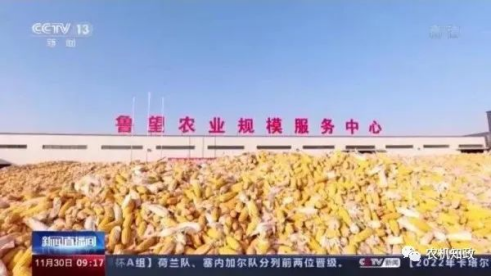In China's grain reserves, small farmers and new agricultural operators account for about 40% to 50% of the total grain output, and the post-natal loss is as high as 8% due to improper reserves.
This year, the Ministry of Agriculture and villages has promoted grain drying and other technologies as the key technology for postpartum loss reduction in the main producing areas.
Among the three staple grains in China, about 5% of wheat, 50% of rice and 70% of corn are stored by small farmers and new agricultural operators.

Shandong Plain is a major corn production county. At present, the local corn harvest is over and is being put into storage one after another.
What is different from the past is that many farmers here omit the drying link this year and send the corn directly into the grain drying tower after threshing.

Zhang Yansheng of Luwang Agricultural Service Center on the plain land of Dezhou City, Shandong Province: after drying, the moisture of corn can be controlled to less than 14% and can be directly stored in storage.

The reporter learned in the interview that the water content of corn was generally more than 35% when it was just harvested. In order to meet the storage standard, the traditional natural drying and air drying needs at least five sunny days.

Cui Yuanyong, a farmer in Pingyuan County, Dezhou City, Shandong Province: for example, I have planted more than 1000 mu of land. When it comes to harvest, the biggest headache is to find a drying ground.
Take corn, for example, it needs seven or eight football field-sized drying grounds, and when drying, the birds also come to eat. The biggest headache is the rainy and cloudy days, which will inevitably cause some losses.
According to the Chinese Academy of Agricultural Sciences, farmers lose 2% to 3% of their corn when drying, and nearly 12% due to improper storage such as mildew and rodent damage.

In order to promote grain conservation and loss reduction, this year, Shandong Plain has built a number of agricultural service centers in villages and towns with services such as drying and warehousing, including 23 grain drying bases, with a drying mechanization capacity of 62.1%.
At the same time, in cooperation with the Agricultural products processing Institute of the Chinese Academy of Agricultural Sciences, the research and development of grain storage mildew online intelligent monitoring and early warning system prevention and control technology to reduce the post-natal loss of corn to less than 1%.

Wang Fengzhong, director of the Agricultural products processing Institute of the Chinese Academy of Agricultural Sciences: through this green and low-carbon processing method, both corn and wheat can be dried in time, so that the loss of our entire grain should be reduced.
In recent years, the central government has increased subsidies for the purchase of grain drying machines and tools, and the Ministry of Agriculture and villages has also vigorously promoted practical technologies such as drying and mildew prevention and control.
This year, the loss of grain in drying and storage has been further reduced.





